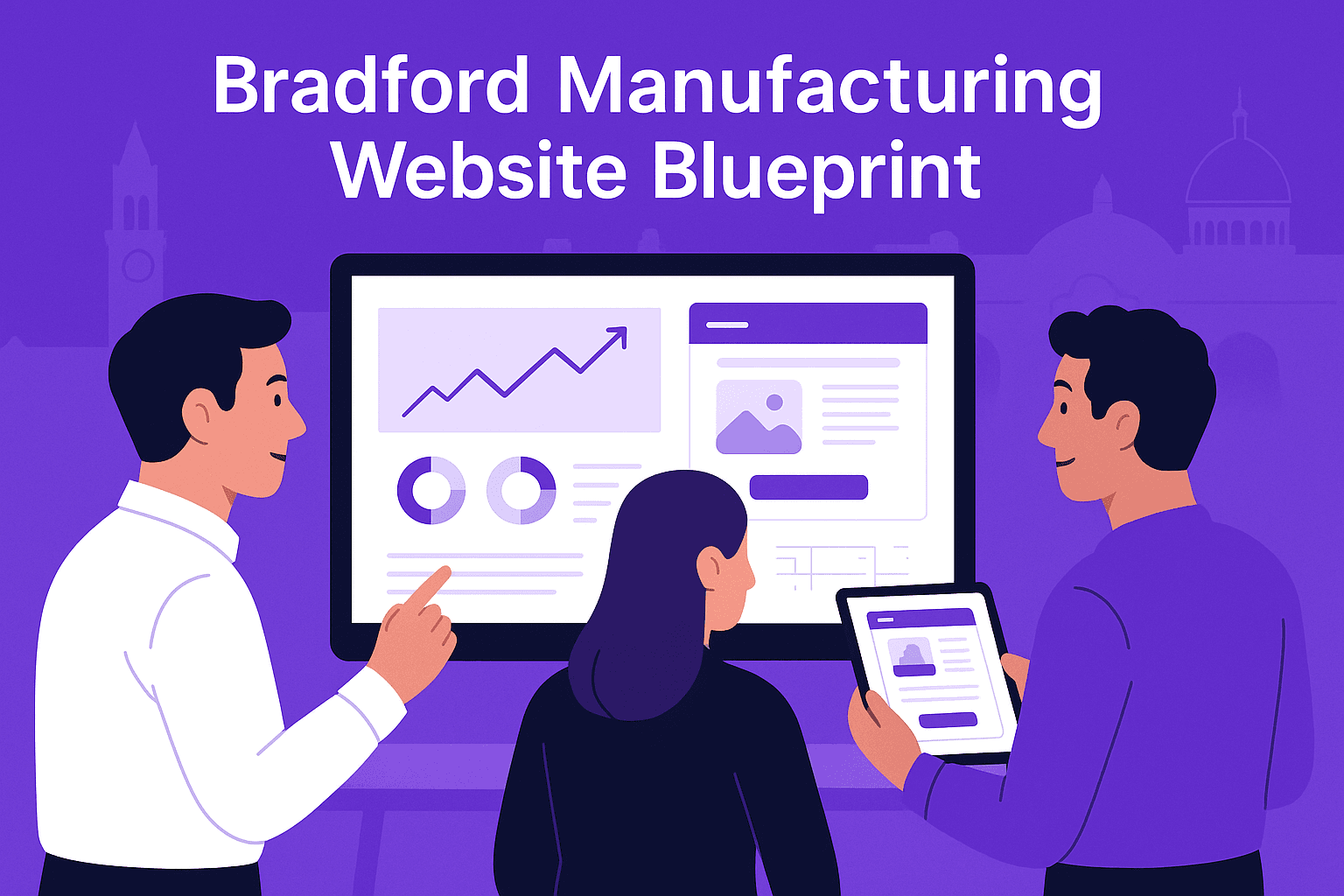The Ultimate Guide to Technical SEO in 2025
A practical, strategy‑first blueprint to nail crawlability, indexing, performance, security, structured data and accessibility in 2025.
👤 Introduction & About the Author
I've worked in senior and director-level positions across several leading European agencies, specialising in digital strategy and technical SEO. My experience spans site migrations, Core Web Vital optimisation, indexing fixes, technical audits, content intent alignment, and server-level troubleshooting.
I believe technical SEO only works when paired with the right digital strategy. Without a clear plan, even perfect execution may be wasted. In 2025, Google rewards the sites that offer the best experience, not just the most optimised ones.
This guide outlines the principles, steps, and checks needed to ensure your site is technically flawless.
Core Principles of Technical SEO
👉 Disclaimer: This is a technical subject. Some terms may feel complex, but each principle includes what it means, why it matters, and how to address it.
1. Crawlability
What it means: Whether search engine bots (like Googlebot) can access your site's content.
Why it matters: If bots can't reach a page, it won't be indexed or ranked.
How to check & fix:
- Check robots.txt for accidental blocks.
- Use XML sitemaps to highlight key pages.
- Test crawl paths with Screaming Frog or Google Search Console.
2. Indexability
What it means: Whether crawled pages are stored in Google's index.
Why it matters: Only indexed pages can appear in search results.
How to check & fix:
- Inspect pages in Google Search Console (URL Inspection tool).
- Remove unintentional noindex tags.
- Use canonical tags for duplicates.
3. Performance
What it means: How quickly and smoothly your site loads and responds.
Why it matters: Direct ranking signal and key UX factor.
How to check & fix:
- Test Core Web Vitals (LCP, CLS, INP).
- Optimise images, scripts, and caching.
- Use CDNs for global performance.
4. Security
What it means: Protecting users with secure browsing (HTTPS, SSL).
Why it matters: Google penalises insecure sites and browsers warn users.
How to check & fix:
- Enforce HTTPS across all pages.
- Remove mixed-content errors.
- Renew SSL certificates regularly.
5. Structured Data
What it means: Schema markup that describes your content in machine-readable format.
Why it matters: Enables rich snippets and improves AI-driven search visibility.
How to check & fix:
- Add JSON-LD schema to key pages.
- Validate with Google Rich Results Test.
- Keep schema accurate and updated.
6. Accessibility
What it means: Making the site usable for all people, including those with disabilities.
Why it matters: Improves inclusivity, UX, and SEO signals.
How to check & fix:
- Add alt text to all images.
- Use ARIA roles for navigation/forms.
- Test with accessibility tools for WCAG 2.1 compliance.
Step 1 – Crawlability & Indexing
What it means: Whether search engines can find and store your pages.
Why it matters: Without crawlability and indexability, content cannot rank.
How to check & fix (step-by-step):
- Check robots.txt — Ensure critical sections aren't blocked.
- Submit XML sitemap — Include only canonical, indexable pages.
- Check for noindex tags — Remove from important pages.
- Review canonical tags — Define master versions of duplicates.
- Manage crawl budget — Consolidate thin/duplicate pages; review logs.
Tools: Google Search Console, Screaming Frog, Sitebulb, Log File Analyser.
Step 2 – Site Architecture & Internal Linking
What it means: How your site's pages are organised and linked together.
Why it matters: Clear architecture improves both navigation and search engine understanding.
How to check & fix (step-by-step):
- Navigation depth — Keep key pages within 3 clicks of the homepage.
- URL structure — Use clean, descriptive URLs (/seo-leeds/, not /page?id=123).
- Hub & spoke model — Create hub pages supported by related content.
- Internal linking — Use descriptive anchor text and link from strong to weaker pages.
- Breadcrumbs — Implement breadcrumb navigation for clarity.
Tools: Screaming Frog (crawl depth & links), Sitebulb, Ahrefs (internal links).
Step 3 – Performance & Core Web Vitals
What it means: Page speed and responsiveness, measured by Google's Core Web Vitals.
Why it matters: Direct ranking factor; slow or unstable sites drive users away.
How to check & fix (step-by-step):
- Test performance — Use PageSpeed Insights, Lighthouse, WebPageTest.
- Improve LCP (Largest Contentful Paint):
✅ < 2.5s, ⚠️ 2.5–4s, ❌ > 4s
Compress/convert images, enable caching, use CDN. - Improve CLS (Cumulative Layout Shift):
✅ < 0.1, ⚠️ 0.1–0.25, ❌ > 0.25
Define image/video dimensions, stabilise ads/pop-ups. - Improve INP (Interaction to Next Paint):
✅ < 200ms, ⚠️ 200–500ms, ❌ > 500ms
Minimise JavaScript, limit third-party scripts, optimise event handlers. - Monitor regularly — Track Core Web Vitals in Google Search Console.
Step 4 – Server Technology
What it means: Hosting and server configuration.
Why it matters: Affects speed, crawlability, uptime, and SEO performance.
How to check & fix (step-by-step):
- Hosting type — Use VPS or cloud; avoid shared hosting.
- Server location — Host near your target audience; use CDN for multiple regions.
- Protocols — Enable HTTP/2 or HTTP/3.
- Uptime — Aim for 99.9%+ with monitoring alerts.
- Log analysis — Review monthly for crawl efficiency and errors.
Tools: Pingdom, UptimeRobot, SSL Labs, Screaming Frog Log File Analyser.
Step 5 – Structured Data & Schema
What it means: JSON-LD code that describes your content.
Why it matters: Improves visibility, CTR, and AI search inclusion.
How to check & fix (step-by-step):
- Add JSON-LD schema — Preferred by Google.
- LocalBusiness schema — Add NAP details.
- Product/Review schema — Include key product/service info.
- FAQ schema — Add to service pages for PAA results.
- Validate — Use Google Rich Results Test.
Tools: Google Rich Results Test, Schema.org, SEMrush.
Step 6 – Security & Accessibility
What it means: Secure and inclusive web experience.
Why it matters: Google penalises insecure sites and prioritises accessible content.
How to check & fix (step-by-step):
- HTTPS sitewide — Enforce SSL across all pages.
- No mixed content — Eliminate insecure assets on secure pages.
- Alt text — Add descriptive text to images.
- ARIA roles — Use for forms/navigation.
- WCAG compliance — Test against WCAG 2.1 AA.
Tools: SSL Labs, WAVE, axe, Lighthouse.
Step 7 – AI & Future-Proofing
What it means: Preparing your site for AI-driven search and automation.
Why it matters: AI shapes how content is surfaced and ranked.
How to check & fix (step-by-step):
- Content structure — Optimise headings and body for questions/answers.
- FAQs on service pages — Improve AI and PAA visibility.
- Expand schema coverage — Add structured data for key elements.
- Automated audits — Use AI-based tools for monitoring.
- Human oversight — Validate AI outputs for context and accuracy.
Tools: Surfer SEO, SEMrush, Sitebulb AI audit, GSC.
FAQs (2025 Edition)
Q1. What's the difference between technical SEO and on-page SEO?
What it means: Technical SEO = site infrastructure; on-page SEO = content optimisation.
Why it matters: Both must work together for results.
How to check/do it: Audit with Screaming Frog (technical) and review content/meta (on-page).
Q2. How often should I audit technical SEO?
What it means: Regular checks on site health.
Why it matters: Errors can occur after updates or changes.
How to check/do it: Run full audits quarterly; minimum twice a year.
Q3. What are the 2025 Core Web Vitals?
What it means: LCP, CLS, INP.
Why it matters: Direct ranking factors.
How to check/do it: Use PageSpeed Insights and GSC.
Q4. Does server location affect local SEO?
What it means: Physical hosting region.
Why it matters: Proximity reduces latency and boosts local SEO.
How to check/do it: Host in-region; add CDN for wider reach.
Q5. Is log file analysis necessary?
What it means: Reviewing server logs for crawl data.
Why it matters: Reveals wasted crawl budget and errors.
How to check/do it: Analyse monthly with log analyser tools.
Q6. How does AI impact technical SEO?
What it means: AI-driven search and automation.
Why it matters: Favour structured, query-focused content.
How to check/do it: Add schema, FAQs, and use AI tools carefully.
Q7. What server setup is best for SMEs?
What it means: Hosting choice.
Why it matters: Speed and uptime impact SEO.
How to check/do it: Use VPS/cloud hosting with 99.9% uptime.
Q8. Do I need schema if I already rank?
What it means: Schema is not a ranking factor but enhances results.
Why it matters: Increases CTR and AI inclusion.
How to check/do it: Add LocalBusiness, FAQ, Product schema; validate.
Q9. What's the most common technical SEO mistake SMEs make?
What it means: Frequent issues.
Why it matters: Small errors can block rankings.
How to check/do it: Avoid blocking assets in robots.txt; monitor Core Web Vitals.
Q10. Can I do technical SEO myself?
What it means: DIY optimisation.
Why it matters: Basics are manageable, advanced issues are not.
How to check/do it: Use free tools for basics; hire experts for migrations and fixes.
Q11. How long does it take to see results from fixes?
What it means: Time from implementation to ranking improvements.
Why it matters: SEO results are not instant.
How to check/do it: Expect weeks for small fixes, months for large ones.
Q12. What tools are essential for technical SEO in 2025?
What it means: Must-have platforms.
Why it matters: Each covers a different need.
How to check/do it:
Free: GSC, PageSpeed Insights, WAVE.
Paid: Screaming Frog, SEMrush, Ahrefs, Sitebulb, log analysers.
Closing Thought
Technical SEO in 2025 is about clarity, speed, and structure. By following this checklist, you can ensure your site is not only crawlable and indexable, but also future-proofed for AI-driven search.

Technical SEO in 2025: performance, crawlability, structure and strategy
Ready to Grow Your Business?
Let's discuss how our technical seo services can help your business succeed.


